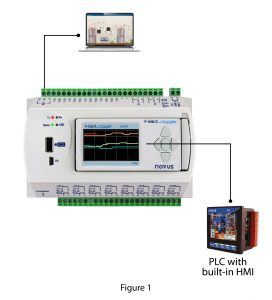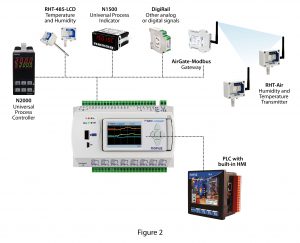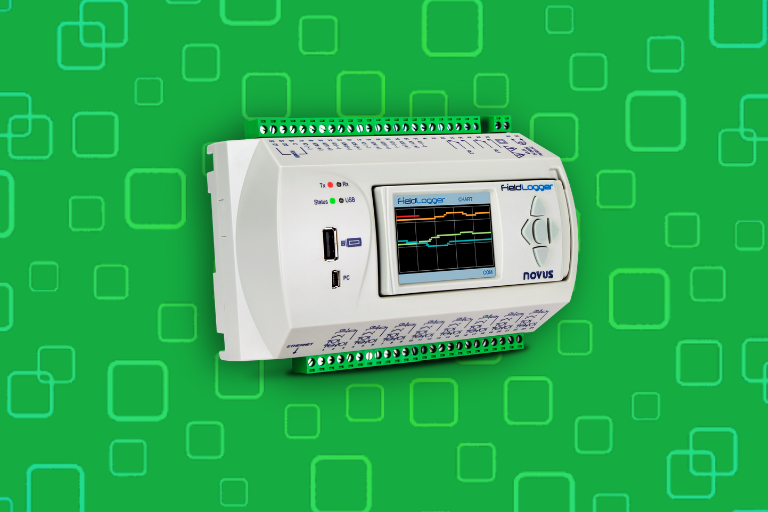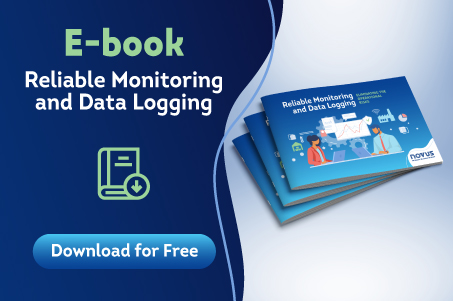Using the auxiliary RS485 port of FieldLogger
Below its HMI (Human-Machine Interface), FieldLogger has a DB9 connector with a slave RS485/Modbus interface. This interface, originally designed to communicate data via the HMI of FieldLogger, became a generic RS485/Modbus interface from firmware version 1.20 onwards. This interface is always a slave (as opposed to the main interface, which can be configured as master or slave).
The extra feature allows FieldLogger to have greater flexibility. It can be used in applications where it must respond to two masters, such as a SCADA software and a PLC (Figure 1). It can also be used to read values from other devices (remote channels) over the main RS485 interface and, at the same time, be read by a Modbus master over the auxiliary RS485 (Figure 2). In this case, using the auxiliary RS485 means not using the HMI.


The auxiliary RS485 interface has the same Modbus table as the main interface, i.e., access to FieldLogger by the Modbus master is the same on both interfaces. This allows you to use this interface to monitor, configure, and download data from FieldLogger.
The “Gateway” feature, where a packet received by the slave (auxiliary) interface is transferred to the master (main) interface and which allows to talk directly to the slaves connected to the main interface, is not available. The Gateway feature works only between the Ethernet interface (Modbus-TCP) and the main RS485.
Finally, the terminal diagram of the auxiliary interface is available in the instruction manual of the device. You can set the parameters of this interface, such as Baud Rate and Modbus address, in the “General Settings” screen of the configurator software, by choosing the access level option “No access by HMI”.
Keep reading:
Data logger: What is it, who uses it, and how to calibrate it
3 problems caused by damaged PLCs and how to avoid them
Industrial machinery market has an optimistic perspective for the coming years

















